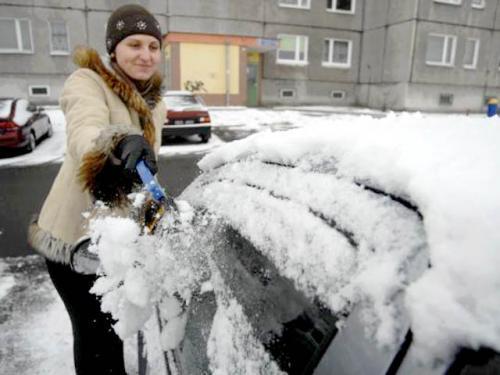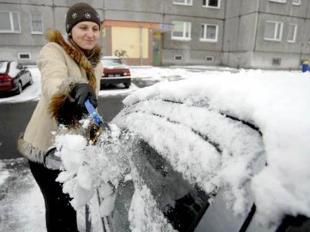
Winter car. Stretch or move?
 As soon as the temperature drops below zero, the open parking lot drivers are divided into two groups. One warms up the car in the parking lot, shoveling snow or cleaning windows, and the other tries to move as quickly as possible. Who is right?
As soon as the temperature drops below zero, the open parking lot drivers are divided into two groups. One warms up the car in the parking lot, shoveling snow or cleaning windows, and the other tries to move as quickly as possible. Who is right?
 To answer this question, you first need to consider what is best for your engine. Up to 75% of its consumption falls on the first 20 minutes of operation. In severe frost, it may even turn out that for such a short trip, the drive unit will not have time to warm up to the optimum temperature. However, we strongly advise against heating the car in the parking lot. Why? Because it is during movement, under load, that the coolant and oil reach the desired temperature much faster. In severe frosts, you just have to wait a few or a few seconds after starting the engine so that the oil has time to get to all the elements that require lubrication and hit the road. Of course, high speed should be avoided in this case.
To answer this question, you first need to consider what is best for your engine. Up to 75% of its consumption falls on the first 20 minutes of operation. In severe frost, it may even turn out that for such a short trip, the drive unit will not have time to warm up to the optimum temperature. However, we strongly advise against heating the car in the parking lot. Why? Because it is during movement, under load, that the coolant and oil reach the desired temperature much faster. In severe frosts, you just have to wait a few or a few seconds after starting the engine so that the oil has time to get to all the elements that require lubrication and hit the road. Of course, high speed should be avoided in this case.
– In cold weather, the viscosity of the oil increases, so it reaches the so-called friction points to a limited extent. In addition, if the engine is running at low speeds, the oil film is displaced from the interacting elements and metal-to-metal contact can occur, which causes accelerated wear, says Pavel Mastalerek, Castrol technical expert. It can also happen that unburned fuel flows down the cylinder walls, thinning the oil, which degrades its properties. Winter lubricants with low viscosity and low pour point perform best in winter conditions.
See also: Zawisza returns to work. Research first, then mold forging
It is also worth remembering that traffic rules prohibit parking with the engine running for more than one minute. Failure to comply with this prohibition may result in a fine of PLN 100 to PLN 300.
